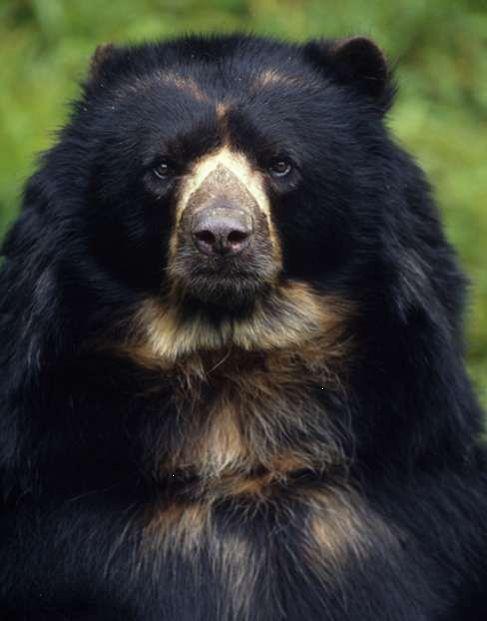This Andean bear (
Tremarctos ornatus), is the only representative of the Ursidae family that inhabits South America and descended from the bears that crossed Asia and North America. In fact, the shape of the skull of the
Tremarctos ornatus resembles that of the Giant Panda (
Ailuropoda melanoleuca).

Photo © Kevin SCHAEFER and Text WWFolio (WWF Bolivia) All Rights Reserved
The distribution range of the spectacled bear in Latin America runs from the Andean mountainous regions of Venezuela to southern Bolivia, and covering the Andean regions of Colombia, Ecuador and Peru, and occupies several habitats with altitudes ranging from 250 to 4000 meters above sea level.
A distinguished characteristic of the spectacled bear is the presence of white or yellowish markings in its snout, around its eyes, neck and chest. The shape and extension of the markings varies among individuals and it’s not rare to find individuals with their faces completely black. These variations have been the base for a wide designation of different names across their distribution area.
These bears are omnivores, and are well adapted to a diet of tough, fibrous plants. In the wild, they eat fruits, berries, seeds, sprouts, bromeliads, small mammals and even carrion, insects, and birds. Wild fruits are one of their favorites, as well as succulent parts of bromeliads and other plants. Farmers often blame the Andean bears for killing livestock, but studies of the bears' droppings (scat) show that only around five percent of their diet is meat.

Because the Andean bear’s diet contains so much fruit, it plays an important role in rainforest ecology: the seeds that they eat are excreted in their droppings as they move through the forests,
spreading the seeds over long distances. This produces the next generation of fruit trees and promotes diversity in the forest.
Click the panda to return to our wildlife home page.